You may know that koi fish have a long lifespan, but did you know that the oldest koi fish ever documented was 226 years old?
This incredible Japanese koi, named Hanako, was inherited by Dr. Komei Koshihara, who had her age verified at the Laboratory of Animal Science at Nagoya Women’s College.
There, scientists analyzed growth rings on the fish’s scales to determine her age.
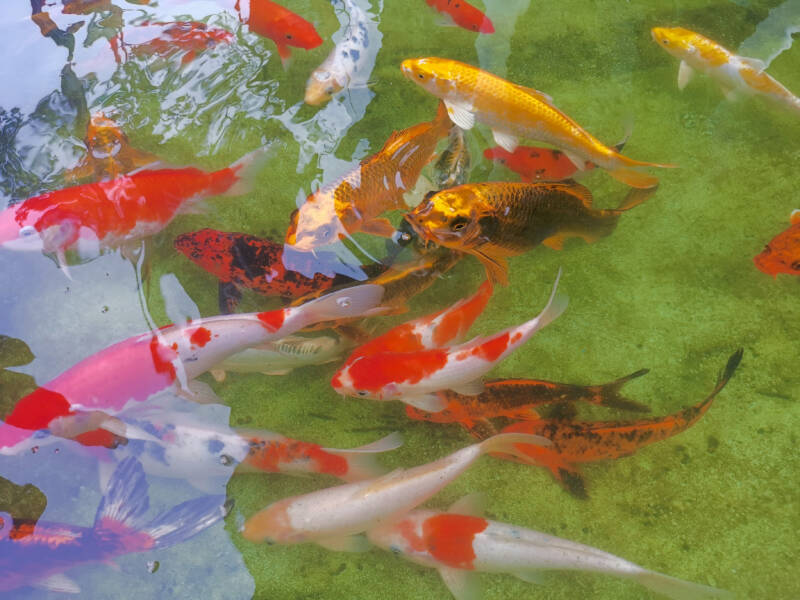
Do all koi live this long? Keep reading for more on the life expectancy of this freshwater fish, as well as tips to help your koi live longer.
[toc]
How Long do Koi Fish Live?
Determining the average lifespan of koi fish (Cyprinus carpio) starts with looking at their genetics.
These ornamental carp are bred for their beauty and unique coloration, but the breeding pools are not equal among the types of koi in terms of life expectancy.
Domestic koi, or those bred in western countries, typically have an average lifespan of around 15 years.
Japanese koi fish are bred using a different gene pool, which results in fish with a significantly longer lifespan. Japanese koi can live an average of 40 years, and it is not unheard of for these fish to live 60 years or more.
There is a slight difference in lifespan based on the sex of the koi as well. Male koi are reported to have a slightly longer lifespan than female koi.
How Can You Improve Their Lifespan?
As with any fish, the quality of care you provide can significantly limit or extend their lifespan.
Nutrition, tank size, water quality, and disease prevention are all important. Your koi will benefit from your attention to the following:
1. Nutrition
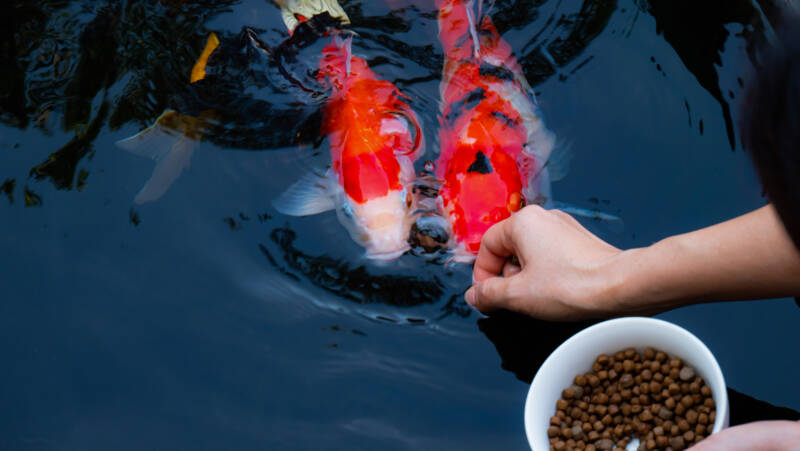
Koi fish are omnivores that need a rounded balance of foods in their diet. To keep your fish healthy, give them a mix of natural and commercial foods.
Offer both floating and slowly sinking foods as koi feed at all levels of the water column. Any koi pellets that you purchase should be high in protein.
Vegetable needs can be met with algae cultivated in the pond or from the addition of floating plants on which your koi can snack.
To satisfy their need for meaty foods, offer brine shrimp, insects, larvae, or water fleas.
It is important not to overfeed your koi. Doing so can cause your fish to gain weight unnaturally and can shorten their lifespan.
2. Tank Size
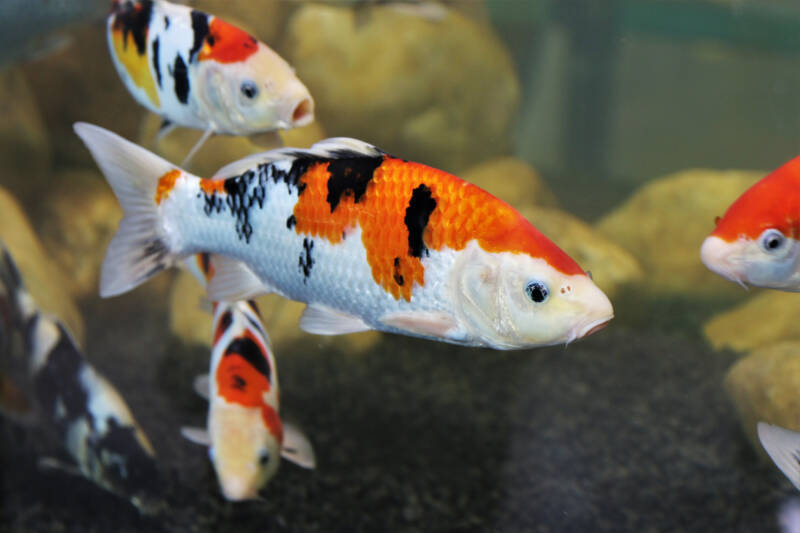
Koi are large fish, reaching a sizable 24 to 36 inches (61-91 cm) in length once they are adults. As such, they require a large aquarium or pond to be their healthiest.
Keeping them in too small of a space puts them in a state of constant stress, making them vulnerable to illnesses and shortening their lifespan.
The minimum tank size you should consider is 250 to 500 gallons (946 to 1,893 l) for a single koi fish.
If you keep a school of them, plan on 1,000 gallons (3,785 l) or more.
Many aquarists choose to keep koi ponds, either indoor or outdoor. An optimal design will include shallow and deep areas (of at least four to six feet or 120 to 180 cm), especially if the koi will winter outdoors.
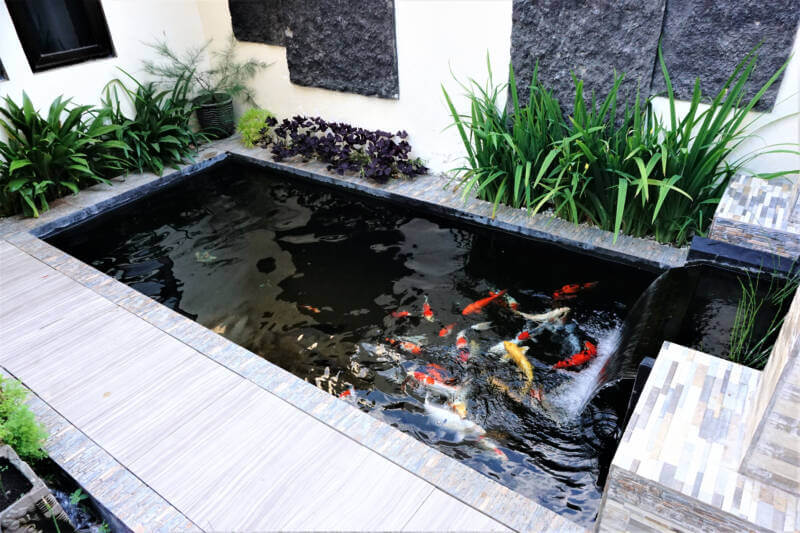
As you will read in the next section, water temperature is important.
Shading provided by deciduous trees or artificial covers over shallow areas will keep the water cool during warmer months.
Deeper areas of the pond can be exposed to sunlight to regulate temperature in colder months.
3. Water Quality
Poor water quality is one of the biggest factors in early koi deaths.
These fish can live for a long time, so if you adopt one, purchase a quality testing kit that measures pH, ammonia, and nitrite levels and stick to a regular testing schedule.
In addition, it is prudent to regularly check the water’s oxygen level.
pH
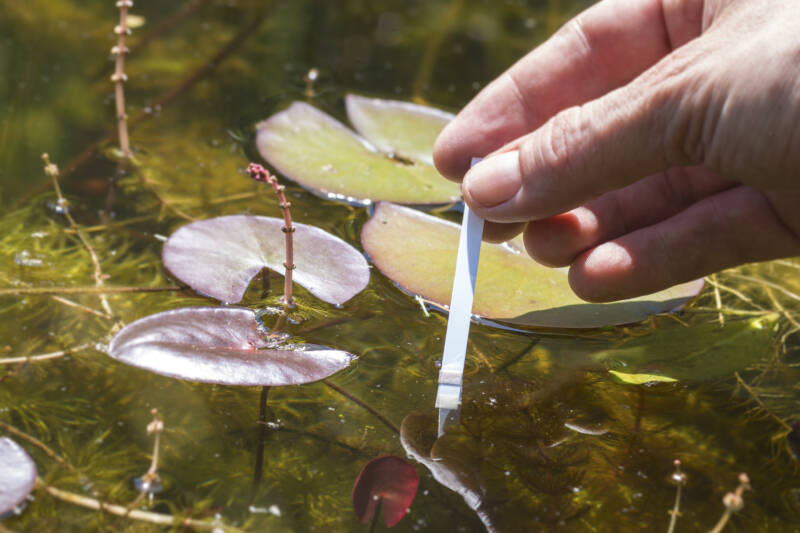
Koi fish need a steady pH level between 7.0 and 8.6.
These levels can be impacted by substantial amounts of leftover food or decaying vegetation. Only feed your fish what they can finish in five minutes and remove excess food or detritus to prevent pH fluctuations.
Install a quality filter to match your pond or aquarium size.
Oxygen Level
Koi need sufficient dissolved oxygen in their water. This level can be critically lowered by algae blooms, bio load, and poor water circulation.
Prolonged exposure to low oxygen levels increases your fish’s susceptibility to bacterial or parasitic infection.
A severe drop in dissolved oxygen can result in the death of your fish, especially mature koi that have a higher oxygen demand.
The absolute minimum level of dissolved oxygen in the water should be 6 mg per liter of water.
Even this level is not ideal. Remember that warm water does not hold as much oxygen as cool water, and aim for a level of 7 to 9 mg per liter or higher.
Agitate the water surface using devices such as bubblers for indoor aquariums or waterfall features for outdoor ponds.

Ensure gentle water circulation to prevent any “dead spots” or spaces of stagnant water and lower oxygen level.
Temperature
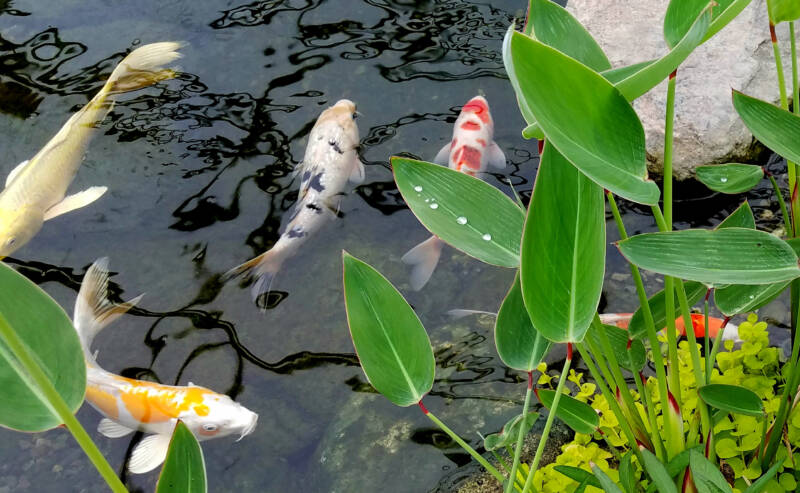
Koi prefer cooler waters and do best in temperatures between 59 to 77°F (15 to 25°C). Temperatures in this range promote a more robust immune system and better digestion.
In the summer months, monitor your pond or tank temperature using a thermometer.
Perform regular water changes of around 10 percent to keep the ammonia levels, which can rise with the temperature, under control.
Add shade, circulate the water, and consider floating plants to keep the water cool.
In the winter months, koi can remain outdoors in mild climates. They will become dormant and shelter in the lower waters, so ensure your pond is deep enough.
Clear any material that could decay and use a de-icer to keep part of the surface unfrozen and permit a gas exchange.
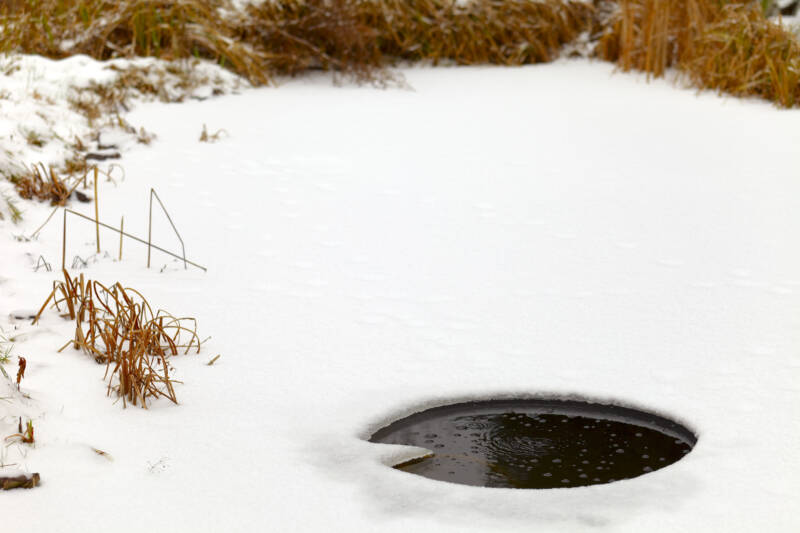
In extremely cold climates, a heater may be required to keep the water from freezing completely; however, it is natural and healthy for koi to hibernate during colder months.
Preventing them from doing so can actually shorten their lifespan.
Ammonia, Nitrites, and Nitrates
A healthy nitrogen cycle in any home aquarium or pond involves the balance of ammonia, nitrites, and nitrates.
Occasionally, the cycle is disrupted, and one or more of these components can spike. This is a serious concern for any aquarist and should be addressed promptly.
1. Ammonia
The ammonia concentration in your pond or aquarium should be 0 ppm(parts per million). Anything higher will begin to negatively affect your koi fish.
High ammonia exposure impacts gill function and results in burns to the koi’s fins, gills, and skin. Ammonia accumulates in the fish’s body, eventually leading to death.
2. Nitrites
The ideal nitrite concentration in your koi pond should be 0 ppm. If this level inches over 0.25 ppm, your fish can develop brown blood disease, where nitrites combine with hemoglobin in the bloodstream, thereby rendering it incapable of transporting vital oxygen.
Significant damage to your fish’s liver, kidney, spleen, and nervous system may also occur. In extreme cases, your fish can die.
3. Nitrates
Strive to keep the nitrate levels in your pond to between 20 to 60 ppm. Higher levels can cause lethargy, damage to skin and fins, and a depressed immune system, leaving your fish vulnerable to other diseases.
If the level gets above 120 ppm, death may occur.
To resolve elevated levels of ammonia, nitrites, and nitrates, significant and regular water changes are required to first dilute the concentration of these components.
It is not unusual to perform an immediate change equal to one-third or half of the water.
Follow up with the addition of commercial products to rebuild the colonies of healthy bacteria and bring the cycle into balance.
4. Disease
Koi are quite hardy, but they are not immune to disease. Many of the parasitic and bacterial ailments that afflict koi can be treated if caught in time, so learn the symptoms and treatments of common diseases.
One disease you particularly need to watch for is koi herpesvirus, which is highly contagious and not treatable. Nearly 80 percent of fish that catch koi herpesvirus will succumb to it.
Symptoms include red or white gill lesions and difficulty breathing. Fish can die within a few days of catching this disease, and any survivors will be permanent vectors for spreading it to other fish.
Often, if one fish catches it, all in the pond must be euthanized.
As always, prevention is the key to keeping your koi fish healthy.
Water quality maintenance and a balanced diet go a long way toward keeping your fish healthy. In addition, always quarantine new fish for two weeks before introducing them to your pond.
Closing Thoughts
Although there is no guarantee that your koi will have a long lifespan, the care you provide can make all the difference.
Providing them with proper nutrition and a well-planned and maintained pond or tank will give them the best chance at a long life.
How old are your koi?
What are the things you feel best contribute to your fish’s long life?
